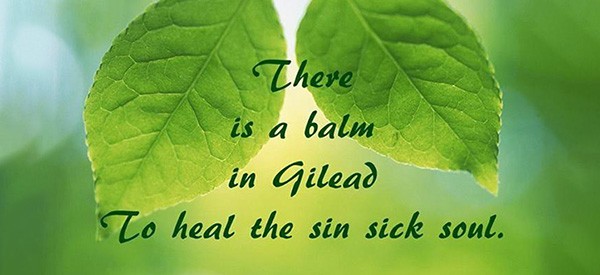
God’s Pharmacy: 10 Medicinal Plants from the Bible
People have been using natural remedies for thousands of years to treat health problems. Even in biblical times, there were many herbs and plants known to be effective medicinally. According to The Journal of Ethnobiology and Ethnomedicine, there are 55 plants mentioned in the Bible that have medicinal properties. Many of those plants are still in use today both for their health benefits and for culinary purposes.
Balm of Gilead
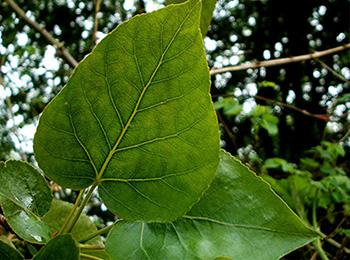 Balm of Gilead is mentioned multiple times in the Bible. While nowadays no one is exactly sure which plant that was back then, multiple plants currently bear that name. Populus balsamifera L. is a large deciduous tree that grows between 30-100 feet. It is found growing around streams and roadsides throughout the eastern US and Canada.
Balm of Gilead is mentioned multiple times in the Bible. While nowadays no one is exactly sure which plant that was back then, multiple plants currently bear that name. Populus balsamifera L. is a large deciduous tree that grows between 30-100 feet. It is found growing around streams and roadsides throughout the eastern US and Canada.
It has a straight trunk and aromatic buds. The buds can be boiled down into a balm that is used to treat sores and skin conditions. A tincture can be made to treat toothache. Because of its aspirin-like qualities, Balm of Gilead can also be used to treat pain and inflammation.
Saffron
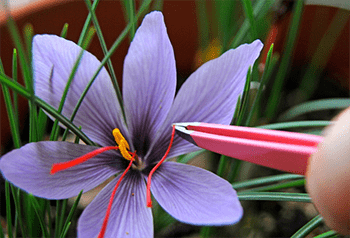 Saffron (Crocus sativus) comes from the saffron or autumn crocus and is associated with its distinctive color. Known as the most expensive spice, saffron is in fact the stamen of the flower. Each flower produces only three stamens which leads to the exorbitant price tag.
Saffron (Crocus sativus) comes from the saffron or autumn crocus and is associated with its distinctive color. Known as the most expensive spice, saffron is in fact the stamen of the flower. Each flower produces only three stamens which leads to the exorbitant price tag.
Real saffron can be identified by its distinctive color which will not fade in water, its sweet smell, slightly bitter taste, and its trumpet-like shape. Saffron is commonly used for culinary purposes such as saffron rice. Saffron has been found to be a mood enhancer as well as being effective to treat respiratory conditions.
Mint
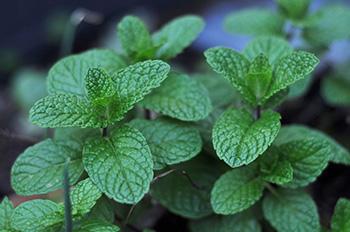 Mint (Mentha L.) is a common herb found in many gardens. There are many varieties of this popular herb but all can be identified by the square stem and fragrant green leaves. If you pinch the leaves you should be able to smell a distinctive scent that is reminiscent of candies or toothpaste. For medicinal use, you will want to harvest the leaves, which can be used fresh or dried.
Mint (Mentha L.) is a common herb found in many gardens. There are many varieties of this popular herb but all can be identified by the square stem and fragrant green leaves. If you pinch the leaves you should be able to smell a distinctive scent that is reminiscent of candies or toothpaste. For medicinal use, you will want to harvest the leaves, which can be used fresh or dried.
Mint makes a wonderful addition to many culinary dishes, such as salads or lamb, and is commonly found in Mediterranean cuisine. Mint is used for stomach ailments, anxiety, and as a sleep aid. The fresh or dried leaves can be brewed into a refreshing tea to calm queasy stomachs and calm nerves. It can also be distilled into an essential oil or used as a tincture. Beware that certain varieties of the mint family, such as Salvia divinorum contain powerful psychoactive.
Coriander
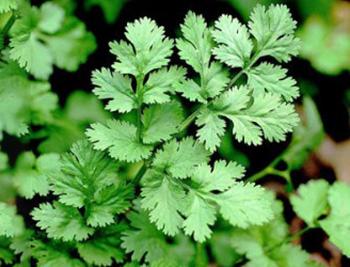 Coriander (Coriandrum sativum) is an annual herb that is familiar for its culinary uses. The green feathery leaves are commonly referred to as cilantro, while coriander is generally used for the aromatic seed. You can identify the plant by the distinctive leaves. The leaves are lobed, fan-like, and feathery towards the bottom. The plant can grow up to two feet and produces small flowers in summer.
Coriander (Coriandrum sativum) is an annual herb that is familiar for its culinary uses. The green feathery leaves are commonly referred to as cilantro, while coriander is generally used for the aromatic seed. You can identify the plant by the distinctive leaves. The leaves are lobed, fan-like, and feathery towards the bottom. The plant can grow up to two feet and produces small flowers in summer.
The flowers are tiny and range in color from white to pale lilac. The seeds are a creamy light brown color and very aromatic. Both the leaves and seeds are used in cooking while the only seeds are traditionally used medicinally.
Harvest the seeds when about half of them have reached maturity and are changing from green to a light tan. Cut the stalks of the plant and hang upside down in a warm, well-ventilated area to aid with drying. When the plants are dry in about two weeks you can place them in a paper bag and shake to release the seeds.
Consuming the seeds can aid with digestive problems such as upset stomach, and constipation. It is often brewed into a tea with other herbs.
Cumin
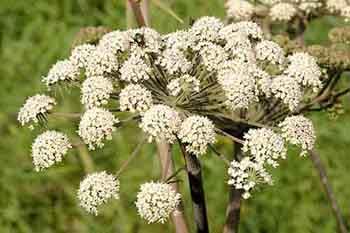 Resembling fennel, cumin (Cuminum cyminum) is another common culinary herb that has medicinal properties. Many traditional Indian dishes feature the seeds either whole or ground into a powder. The plant has slender branched stems featuring feathery leaves. It rarely grows taller than one foot. The seeds are small, oval, and resemble caraway seeds but are lighter in color and have a more pungent flavor.
Resembling fennel, cumin (Cuminum cyminum) is another common culinary herb that has medicinal properties. Many traditional Indian dishes feature the seeds either whole or ground into a powder. The plant has slender branched stems featuring feathery leaves. It rarely grows taller than one foot. The seeds are small, oval, and resemble caraway seeds but are lighter in color and have a more pungent flavor.
They are harvested when the seeds begin to appear but before they fall. Cut the stalks and place them upside down in a brown paper bag. The seeds will fall to the bottom. The seeds are known for calming stomach ailments and are commonly eaten in India after a meal to aid with digestion. It has generally fallen out of favor as a medicinal remedy because of the bitter flavor associated with it.
Dill
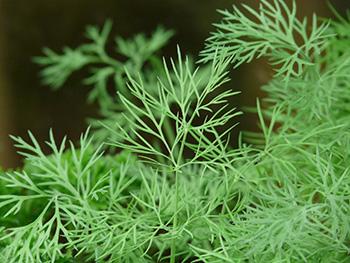
Also resembling fennel, dill (Anethum graveolens) has long feathery leaves and grows no more than two and a half feet tall. Presenting a single stalk, when the plant flowers in summer it will produce a great quantity of seed. Both the leaves and seeds are used in cooking to add a distinctive flavor that is great for pickling.
The leaves can be harvested and used fresh or dry. The seeds are best harvested when they begin to turn brown. Clip the stalks and put them upside down in a paper bag for about a week. Dill can be used to treat fever, colds, cough, bronchitis, and stomach ailments.
Mustard
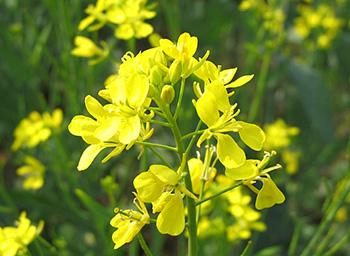 Mustard (Brassica) is commonly thought of as the condiment that you put on hamburgers and hot dogs but the seeds can be medicinal as well. The key to identifying members of the mustard family is that the flowers have four petals with six stamens and two are tall and two are short.
Mustard (Brassica) is commonly thought of as the condiment that you put on hamburgers and hot dogs but the seeds can be medicinal as well. The key to identifying members of the mustard family is that the flowers have four petals with six stamens and two are tall and two are short.
While all varieties are edible some taste better than others. The greens are eaten in salads but the seeds are used medicinally. To harvest the seed, cut the plants below the seed pods and place them upside down in a paper bag. The pods will dry and open and the seeds will fall to the bottom of the bag. Seeds can be used to make poultice which can be used to treat a variety of ailments from sore muscles to coughs.
Garlic
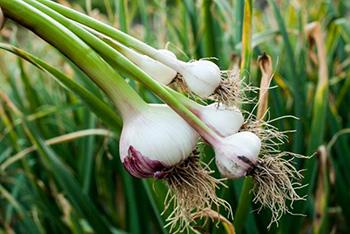 Garlic (Allium sativum), which we know from its aromatic and spicy bulb, can grow as tall as three feet. The leaves are flat and blade-shaped approximately ½ inch to an inch in length. In summer it flowers, producing pink or purple flowers. To harvest you must dig the entire plant from the ground as it is the bulb that we use.
Garlic (Allium sativum), which we know from its aromatic and spicy bulb, can grow as tall as three feet. The leaves are flat and blade-shaped approximately ½ inch to an inch in length. In summer it flowers, producing pink or purple flowers. To harvest you must dig the entire plant from the ground as it is the bulb that we use.
A common culinary ingredient, garlic is used to treat heart and cardiovascular-related problems. It is also known to boost the immune system so it can help prevent colds.
Myrtle
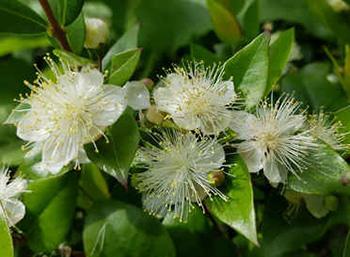 Myrtle (Myrtus) is an evergreen shrub that can grow between 16-24 feet. It has aromatic white flowers in summer that produce purplish-black edible berries. While it is possible to eat myrtle, it is rarely consumed nowadays.
Myrtle (Myrtus) is an evergreen shrub that can grow between 16-24 feet. It has aromatic white flowers in summer that produce purplish-black edible berries. While it is possible to eat myrtle, it is rarely consumed nowadays.
The aromatic leaves are harvested and can be used dry in cooking as a substitute for bay leaves.
Fresh leaves are distilled into an essential oil or used to create an oil tincture. It can be used to treat coughs and respiratory ailments, skin conditions, and bladder problems.
Hyssop
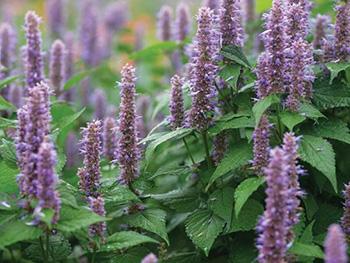 A member of the mint family, hyssop (Hyssopus Officinalis) is an evergreen herb that is commonly found in gardens. The plant grows to a height of about three feet and has aromatic leaves and flowers.
A member of the mint family, hyssop (Hyssopus Officinalis) is an evergreen herb that is commonly found in gardens. The plant grows to a height of about three feet and has aromatic leaves and flowers.
The violet, pink or white flowers grow together in clusters and the leaves are about an inch to an inch and a half. While it can be eaten it is no longer commonly used as a culinary herb. Primarily brewed as a tea, hyssop can be used to treat colds, coughs, and respiratory conditions.
You may also like:
 How To Make Antibiotic Capsules
How To Make Antibiotic Capsules
The 10 Medicinal Seeds You Should Plant for a Complete Backyard Pharmacy (Video)
How to Treat Gastrointestinal Disorders With Evening Primrose

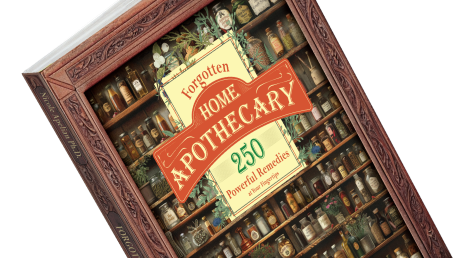







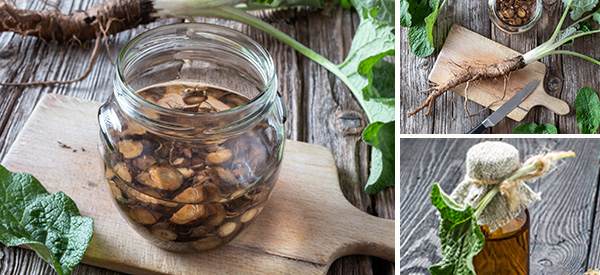
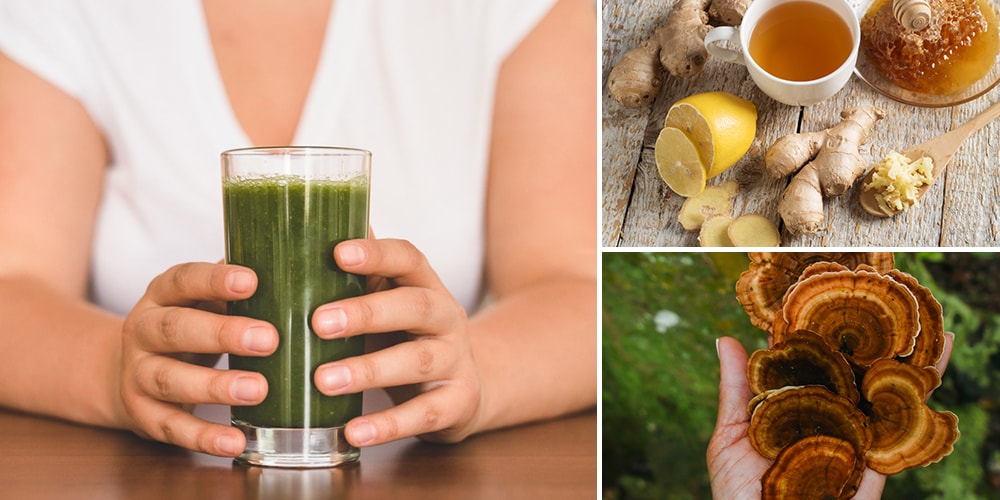
I’d appreciate it if you would use scientific names along with the common ones. For instance when talking about Myrtle, are you referring to genus Myrica? Only Populus basalmifera was mentioned in whole article.
Hi Dan,
Thank you for bringing this to our attention.
Your feedback is valuable to us. We really appreciate it.
We have made the appropriate changes and you will now find in the article the scientific names of the plants.
God bless!
I have several of you books. How do I know if they have been updated before I bought them so that they include this information?
I believe the hyssop in the bible is Hyssopus officinalis
Hi Joanna,
Thank you so much for your comment.
That is correct. The Hyssop is mentioned in the Bible as Hyssopus Officinalis.
God bless!
Can I order these books in physical form? I find have access to a computer or tablet…
I ordered the book here. It’s wonderful!
https://thelostbookremedies.com/?gclid=Cj0KCQjw7ZL6BRCmARIsAH6XFDKBgwwsobUjjJVxqqa18Uaipskwp6heOR1SJHBDvYbt9ynqaS1Oo6UaAi0xEALw_wcB
this did not work came up with error
Hi Doris,
The Lost Book of Herbal Remedies is available both in digital and physical copy. It comes with 2 digital Bonuses: 80 Square Feet SHTF Medicinal Garden and Everyday Disaster Medicine Guide.
You can purchase the book using this link below:
https://www.lostbookofremedies.com/vsl/index.php?hop=globalbro
All the other books from our store are available both in digital and physical copy.
God bless!
I ordered and received The Lost Book of Herbal Remedies but I did not receive the 2 digital Bonuses: 80 Square Feet SHTF Medicinal Garden and Everyday Disaster Medicine Guide. Can you help me with that?
I ordered both the digital and physical copies because I can’t be on the computer that long. I only received 1 physical book. I emailed your company 3 days ago about checking on the other physical books and haven’t gotten a response. Can someone please check on my shipment of the physical books and let me know when they are going to arrive? It’s been 6 weeks since I placed the order for them. Thank you.
Hi Stephanie,
Thank you for purchasing “The Lost Book of Herbal Remedies”.
Please check your personal email.
I have sent you an email regarding your book order.
God Bless !
I have all of the series! If you could only see my porch right now, you would laugh! I have about 30 plants I’m currently processing. I’ve been talking these books with me wherever I go. I’ve really enjoyed all of the information. Totally worth the small investment for the knowledge you gain!
I live in the upstate piedmont of SC, when is the best time to plant these seeds?
Hi Tenita,
As a general rule, the best time to plant the seeds is usually late March to late May. The southern zones however, are suitable to plant the seeds in the earlier months. If you already bought the seed pack, just make sure you store it in a cool, dry area and it will last for years.
God bless!
I have been waiting for something like this….. As a Born Again Christian I’ve wanted a list like this so thank you 100x God Bless You!!!
Hi Summer,
Thank you for your feedback.
We are glad you liked the article.
God bless!
I like to be informed about different ways that a person can stay healthy without paying the high costs of medicines. Thank you.
Hi Betty,
Thank you for your feedback. We really appreciate it.
We are glad you find the article useful.
God bless!
I have purchased your book and thoroughly enjoy it! Now, I would like to share your e-mails with my sister. I am doctorally prepared nurse practitioner and love to read about the use of natural herbs! Thanks!!
Hi Mary,
Thank you so much for your interest in our work.
We are glad you like the book and the articles and we hope your sister will like them too.
God bless!
Love this
Hi Wendy,
Thank you for your comment.
We are glad you like the article.
God bless!
I ordered the lost book of natural remedies sometime ago, but after I completed the order I realized it was a digital copy instead of physical. How do I get the physical copy? Is there a way to do that?
Hi Marvin,
Please check your email address.
I have sent you an email regarding your order.
God bless!
I ordered and received The Lost Book of Herbal Remedies, and am loving it!, but I did not receive the 2 digital bonus books. I would like to read them too. Thanks for your help with this.
Hi Barbara,
Thank you for your comment.
Please check you email. I have sent you the download link.
God bless!
I also ordered and received The Lost Book of Herbal Remedies, and am loving it!, but I did not receive the 2 digital bonus books. I would like to read them too. Thanks for your help with this.
Hi Karen,
Thank you for purchasing “The Lost Book of Herbal Remedies”.
Please check your personal email.
I have sent you an email regarding your book order.
God Bless!
I, too, ordered the book The Lost Book of Herbal Remedies (in fact, I ordered two to send my niece one). I did not receive the two digital books. How do I go about getting them for me and one for my niece?
Hi Kathy,
Thank you for purchasing “The Lost Book of Herbal Remedies”.
Please check your email address. I have sent you an email now with the download links.
God bless!
I love your book about the lost herbs! And I greatly enjoy all the information that you send via emails! Especially fascinating is the medicinal herbs of the Bible! My only problem is that I also have trouble accessing digital e-books… even if I download them, I can never find them again! Can you please send me the link again for the digital books on the medicinal herbs and the herbs of the Bible, and whatever else came with my previous order? Thanks so much and God bless you.
Hi Barbara,
Thank you so much for your kind words and your continued support. It means a lot to us.
Please check your email address. I sent you an email with the download links.
Many blessings and good health!
Hello have purchased and received the book very promptly through the mail but like others I did not receive the digital bonus books or the extra books that I paid for at the same time. Could you please resend then I can get my sone to download for me.